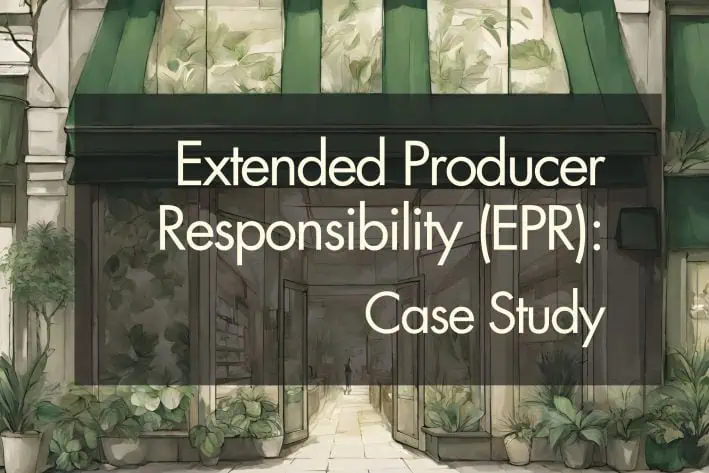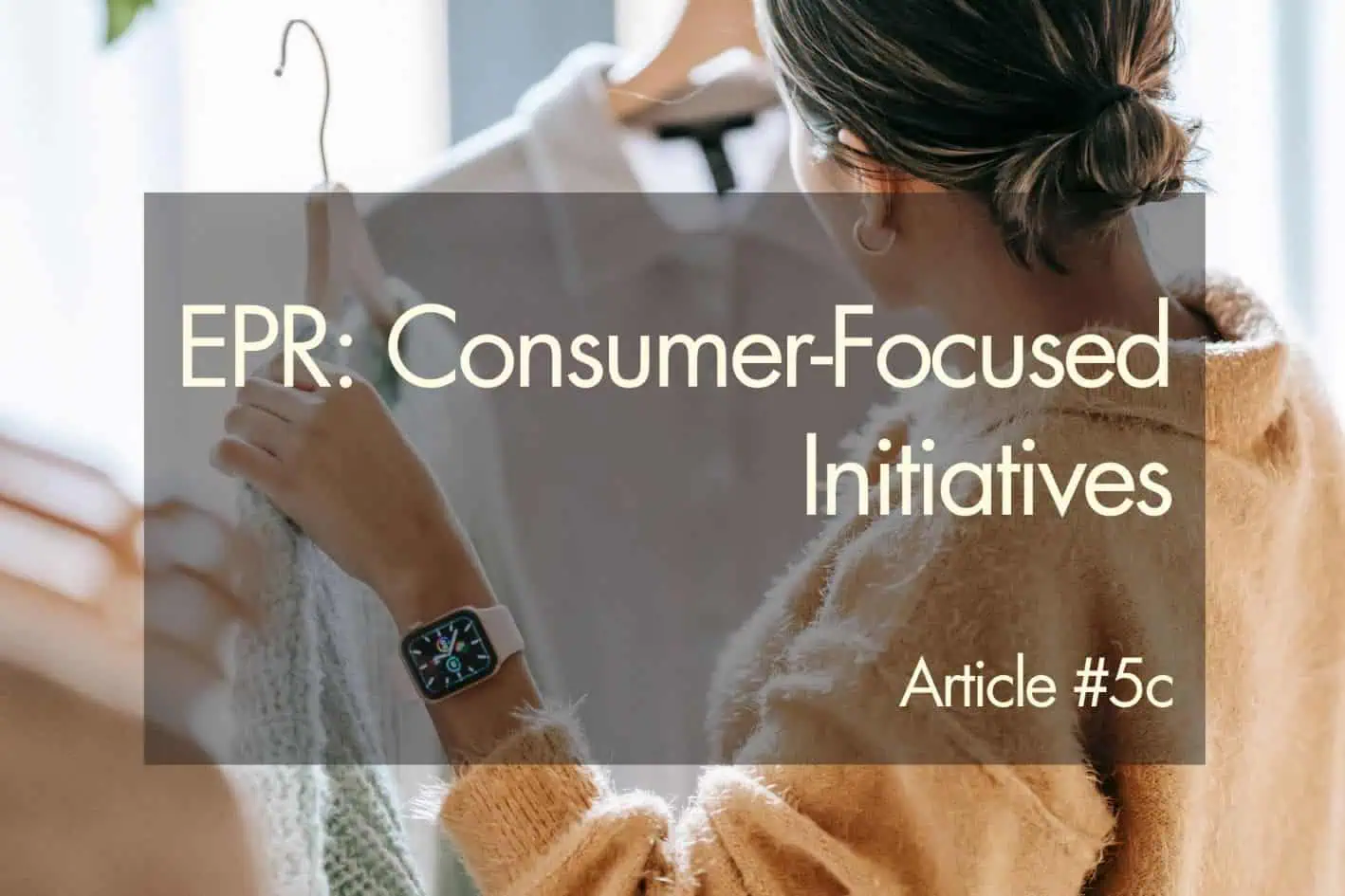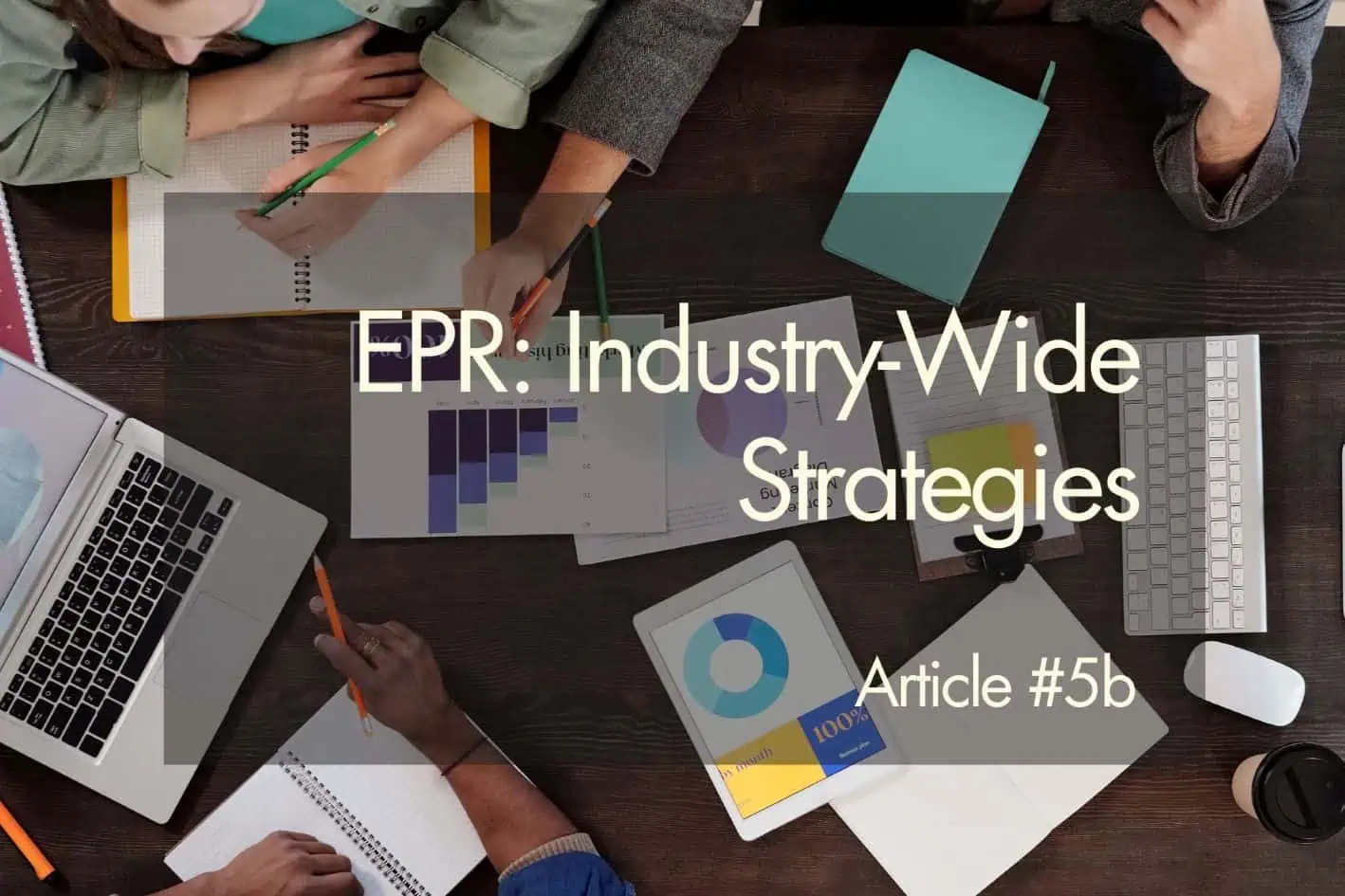The fashion industry is recognized as one of the most polluting industries globally, with significant environmental impacts throughout its supply chain. As consumers and stakeholders increasingly demand transparency and accountability from fashion brands, Extended Producer Responsibility (EPR) has emerged as a subject of interest among many industry groups and NGOs.
In this article we’re going to be exploring:
What exactly is EPR?
Extended Producer Responsibility (EPR) is a policy approach that places the responsibility for managing the environmental impacts of products on the Producers (the P in EPR) rather than consumers or governments (OECD, 2024).
In the fashion industry that means that fashion designers and brand owners would be responsible for their products throughout their entire life cycle including design, production, distribution, use, and most importantly, end-of-life management including collection and recycling/disposal.
What do we mean by a “policy approach”?
This approach involves creating guidelines about how things should function in a country or region. These guidelines are typically set by policymakers, such as government officials to address issues like environmental protection, healthcare, education, or economic development. EPR practices may be voluntary or mandatory (Surak, 2024).
With mandatory EPR programs the policies established by government agencies or regulatory bodies are usually legally binding. Producers or manufacturers may be obligated to comply with specific requirements, such as paying fees, implementing product design changes, or participating in recycling or waste management programs.
Non-compliance with mandatory policies can result in penalties, fines, or other enforcement actions, depending on the severity of the violation.
What are the objectives of EPR?
The objectives of EPR initiatives include reducing waste generation, increasing recycling rates, conserving resources, and promoting the transition to a circular economy. Some industry professionals support that “The idea behind EPR schemes is to motivate companies to make fewer garments” (Zenderoudi, 2023).
EPR encourages producers to design products with sustainability in mind, considering factors such as material selection, durability, reparability, and recyclability; however, “academic and policy reviews suggest that the influence of EPR on eco-design has been limited” (OECD, 2016).
EPR programs currently exist in other industries and countries – something we’ll be exploring in our next EPR blog along with details of how they function
Ultimately, EPR aims to internalize the costs of environmental externalities within fashion companies, as a means of reflecting the true environmental costs of products in their prices. Producers/fashion brands bear financial and physical responsibility for the environmental impacts of their products through a “polluter pays principle” (WWF, 2020).
How does an EPR system work exactly?
Brands would need to set up collection points where consumers can return their old garments. Consumers could drop off their unwanted clothing at designated bins in stores or through special collection events organized by the brand. 2) Consumer education:
Fashion brands would also be responsible for educating consumers about the importance of returning their old garments for recycling or proper disposal. Clear communication about the collection process, the benefits of recycling, and how consumers can participate effectively can help encourage participation and engagement. 3) Product labeling and identification:
All fashion garments and accessories would need clear product labeling or tagging systems. This would help identify garments that are part of the EPR program and facilitate sorting and recycling. 4) Garment sorting and storage:
Once collected, the garments need to be sorted based on factors like brand owner, material type, condition, and potential for reuse or recycling. Facilities will need to be allocated/created with technology capable of sorting and with storage space. 5) Recycling or disposal:
Garments suitable for recycling would need to be processed. This could mean investment into mechanical or chemical textile recycling infrastructure. Notions such as zippers, buttons, and other accessories would need to be removed and recycled separately.
Garments that can’t be recycled would be sent for proper disposal, which may include waste-to-energy facilities or landfills. 6) Compliance, monitoring, and reporting:
Brands will need to develop systems to monitor compliance with EPR requirements, track the collection and recycling of garments, and report relevant data and information to regulatory authorities. Fashion brands should also practice audit readiness as a part of the EPR framework. 7) Financing:
Fashion Brands/Producers (EPR) would be required to independently fund all activities as part of the EPR framework. We’ll also be breaking this down further in a future post – stay tuned!

As we delve into the intricacies of Extended Producer Responsibility (EPR) and its potential implications for the fashion industry, it’s imperative to take a nuanced approach and consider the broader context in which EPR would operate. In a diverse ecosystem characterized by a multitude of stakeholders, including small businesses, the viability of EPR as a one-size-fits-all solution warrants careful examination.
While EPR offers a framework for addressing environmental concerns within the fashion industry, it’s essential to acknowledge the complexities and challenges inherent in its implementation, especially for smaller players in the market.
Ultimately, by embracing a mindset of curiosity and exploration, we can chart a course towards a more sustainable future for fashion—one that is inclusive, adaptable, and responsive to the diverse needs and realities of all stakeholders involved.
Look for our next installment where we explore how EPR works in other countries and industries.

Deborah King
Deborah is a sustainable fashion expert located in Toronto, Canada. She’s an Industrial Engineer with a post-grad in Sustainable Fashion Production. She grew up on the tiny island of Tortola in the British Virgin Islands, and has been sewing her own clothing since the age of 10. She founded Global Measure to help authentically sustainable and ethical fashion businesses stand out from the greenwashing noise through third-party certification.
Curious to explore EPR further or interested in potential collaborations? Dive into our comprehensive Case Study for a deeper understanding.
References
Government of Canada (August 2018). Overview of extended producer responsibility in Canada. Retrieved on April 15, 2024 from https://www.canada.ca/en/environment-climate-change/services/managing-reducing-waste/overview-extended-producer-responsibility.html
National Conference of State Legislatures (NCSL) (October 2023). Extended Producer Responsibility. Retrieved on April 1, 2024 from https://www.ncsl.org/environment-and-natural-resources/extended-producer-responsibility
Organisation for Economic Cooperation and Development (OECD) (April 2024). Extended Producer Responsibility: Basic facts and key principles. Retrieved on April 15, 2024 from https://www.oecd-ilibrary.org/environment/extended-producer-responsibility_67587b0b-en
Organisation for Economic Cooperation and Development (OECD) (November 2023). New Aspects of EPR: Extending producer responsibility to additional product groups and challenges throughout the product lifecycle. Retrieved on April 10, 2024 from https://www.oecd-ilibrary.org/docserver/cfdc1bdc-en.pdf?expires=1713388946&id=id&accname=guest&checksum=E457196D940E5825EF1984C3AC4FCC60
Organisation for Economic Cooperation and Development (OECD) (Sept 2016). Extended Producer Responsibility: Updated Guidance for Efficient Waste Management. Retrieved on April 1, 2024 from
https://www.oecd-ilibrary.org/environment/extended-producer-responsibility_9789264256385-en
Surak, S. (April 2024). Britannica: Extended Producer Responsibility. Retrieved on April 1, 2024 from https://www.britannica.com/money/extended-producer-responsibility
World Wildlife Fund (WWF) (2020). How To Implement Extended Producer Responsibility (EPR): A Briefing For Governments And Businesses. Retrieved on April 1, 2024 from https://wwfint.awsassets.panda.org/downloads/how_to_implement_epr___briefing_for_government_and_business.pdf
Zenderoudi, J. (July 2023). CBC: Can fast fashion slow down? It’s not that simple. Retrieved on April 1, 2024 from https://www.cbc.ca/news/business/fast-fashion-sustainability-targets-1.6913112





